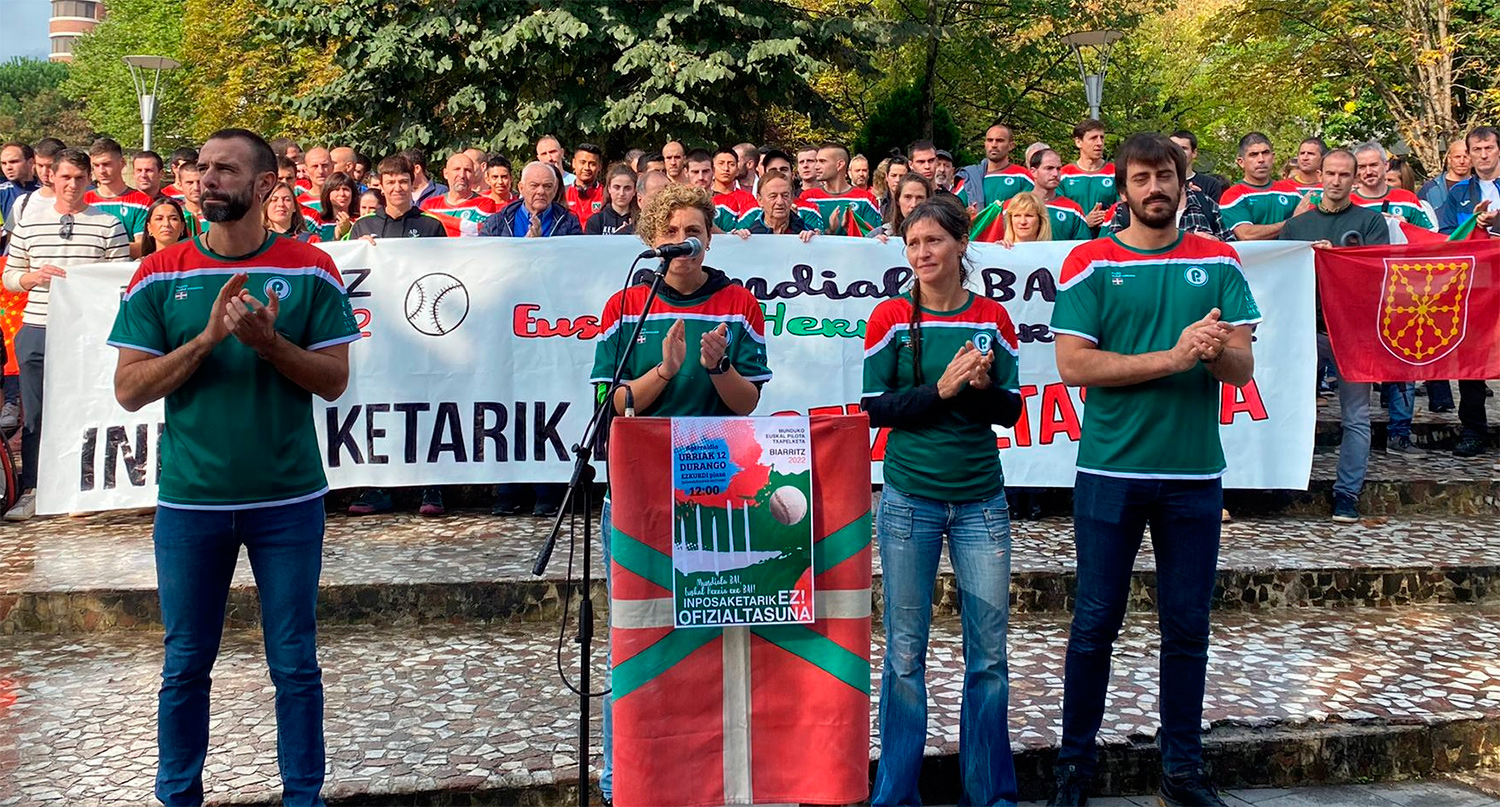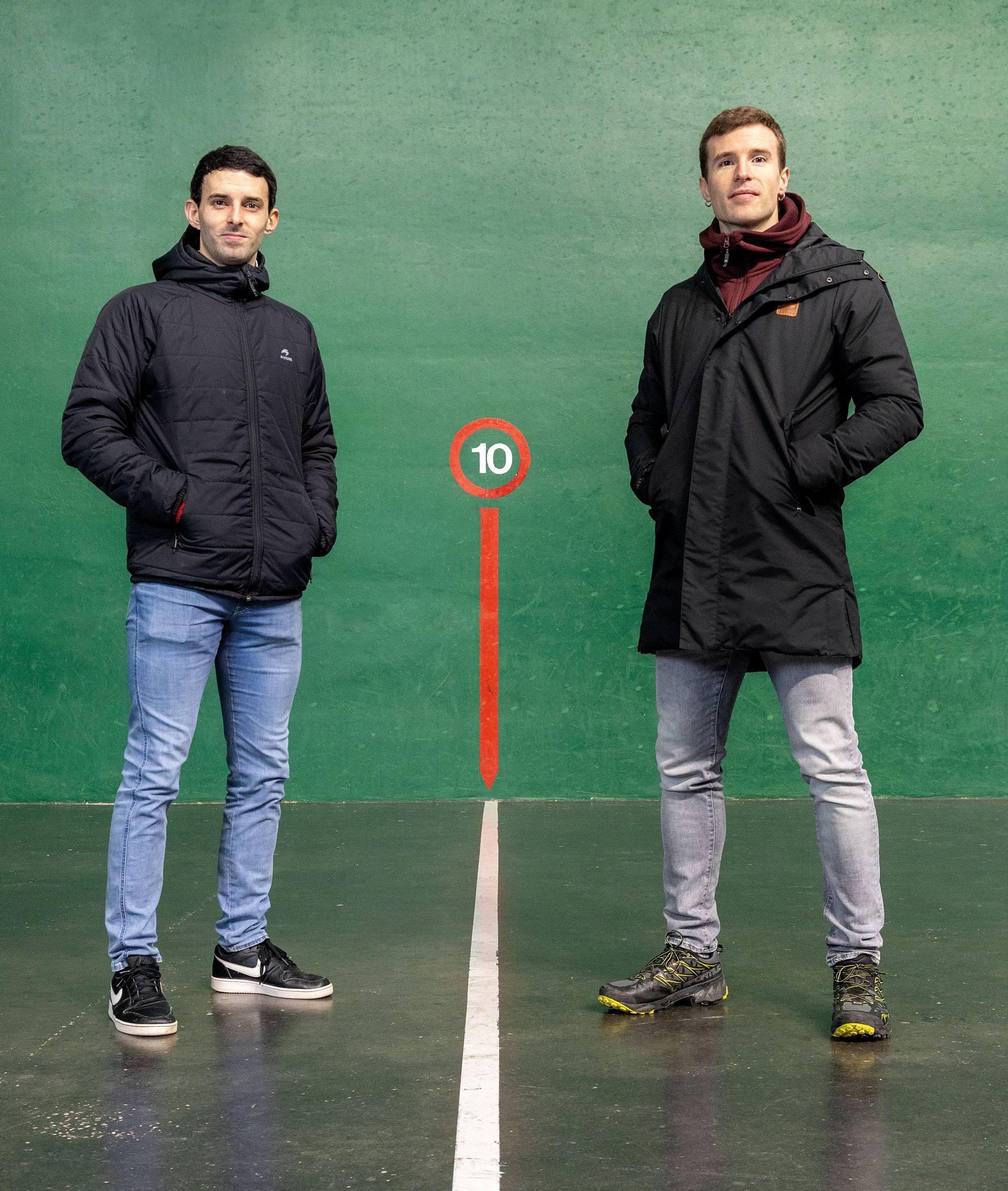They want to redevelop the ball in schools and in Euskera.
- The change in the Iparralde Ball Commission is evident in recent years. In the ikastolas and bilingual schools, a Basque ball animator has already started this course.

A small revolution is on the way in the Iparralde Ball Commission (IPB). He has managed to reintroduce the ball into schools, and into Euskera. Language, in fact, has regained a great space in its communication. Getting all the documents out is in both languages; even in Basque, some. It has quickly slipped onto social media, feeding Facebook, Instagram and Kanton, who have remained quiet. “Young people are the future. To ball as well. But this new generation lives the ball in one hand and the cell phone in the other. Ask so we can offer a new ball, more related to your world.” The president of the IPB of the PNV, Jean-Michel Garaiar, says so in the last magazine they publish.
Hendaia's is his sixth year as a lehendakari, but things have accelerated with the new team he has formed two years ago. They made a diagnosis and realized that the young people's permanence in the ball was no longer guaranteed. Garaiar: “We first realized that they had pulled the ball out of schools. There are carrot, handball or basketball balls, but the ball is lost.” A survey was also conducted in the ball joints. IPB Secretary General Henri Errandonea explains the conclusion: “There we realized that the practice was being reduced and that the image of the ball, in most cases, was the spike basket that you see in summer and the Elite Pro level [the level of your own hands]. When you laughed, there was nothing in the liver; the amateur world disappeared.” It has been an alert for the new leaders, who have run out of charge. “Then, we realized that in some games, there were fewer and fewer pelotaris: in the share, in the clean game, in the joker, in the lap, in the leather palette. There are games that are very bad.” Ahead of it, the offer is so broad for children and young people that they go from one sport to another in an easy way, more music or any other. The ball seemed to be torn apart. They wanted everything to start again and questions to be asked to stand on a full program. Errandonea: “We think: What is the ball? It's not just a sport, our heritage is culture. All the Basques are attached to the ball, to a square of ball. They've been made by all the people around a ballpark. For two or three centuries it has been a place where young people and adults met, where parties, challenges were celebrated. Moreover, the language is within the game of the ball; even if it is only French, in the ball you speak Basque: jo, blanco, me, the last“.
With the incorporation of the new Garaizar group, in 2016, the Single Commonwealth of Iparralde was being created, and they decided to go to it with intervention powers. “We have to show these people that they have not to see us as a sport, but as a culture; that we are like bertsolarism, dance, singing, as a cultural realm.” The first talks were held with the elect Daniel Olzomendi and Bruno Karrere, then with the technicians, until the presentation of the project to the Culture Committee. Last June, the City Council unanimously voted to include the ball in the area of heritage and culture. The concrete consequence has been that the Basque College has taken care of the payment of the cheering ball that has been practised since then in schools, namely the high-level pelotari Antton Amulet. “The first goal was to attend the second-cycle classes – that is, the first, second and third grades of the school – and teach the ball throughout the North.” As they were questions and needs, in the area of Zuberoa and Amikuze the educator has begun to walk since September. The agreement has been signed with six ikastolas in the area and four private bilingual schools. In the public they would like to develop early or early, but at the time they cannot: "At ikastolas and in private schools, the director has the power to decide. In the public you have to organize yourself differently.” They have begun to talk to the sports organization USEP, the institution of public schools.
Ball in Basque
The aim is to ensure that public bilingual schools are also accessible. It is clear from the outset that the teaching of the ball will take place in Euskera. “We need to defend and develop the first most important element, namely language. So, Antton Amulet gives her classes in Basque.” It is not a small change in the world of the ball, as the Basque Country has been relegated to many places in the last fifty years. ERRANDONEA makes it clear that they have gone ahead with this vision imposed at French level, from the weight of the Iparralde Ball Commission: “The one here is the largest league at the federative level. Here are most of the pelotaris, most of the power. In a way, I didn't understand, being the fastest, how we descended, everything you can do in French kneeling down. No, no; for centuries we have played ball in Euskera. It has changed in recent decades.”
Besides showing the different games, they have also included in the pedagogy the explanation of what the ball is, its history, its tools, its spaces. The next challenge is to extend the offer to the whole of Baja Navarra and Lapurdi, creating jobs of two or three or four more educators. To this end, the talks with the College continue. To schools, which offer their kit service. In ball associations, the animator is also engaged in the exhibition of ball games. They're cycles between soils.
Mixed boys and girls
They don't want to make a gender difference in children's education. Girl or boy, it's open to everyone, and all kinds of games. This is also where we are working to change things, because at present the wives are mainly dedicated to the shovel and the tennis court. “Can a girl from Zenda not play the boy or the boy? We have opened that policy from the very beginning. Let ball schools be hand-held for boys and girls. The jokes are the same. To make them confusing.” For the championships, it seems to be longer. The French Football Federation, which follows the rules of the Olympic Games Committee, prohibits cooperation between boys and girls.
“In Hendaia and Amikuze, children have been mixing in ball schools for years. We will push that forward. And with the expansion of those little ones, we are willing to set up a contest for girls in hand or in jokes,” Errandonea said. And a contest between boys and girls? “By law it’s not possible, but why not? In youth, yes, but it won't be an official championship. Ours, yes, but France’s does not.” Errandonea sees it difficult to change mindsets, but not impossible: “It will give time. Maybe a generation, about fifteen years.” Garaiar sees the model in Hego Euskal Herria: “There they have made the leap of Christ for three years.” The parium takes place in training from the morning, which guarantees the most skilled players in all kinds of games, for both boys and girls. “Adapting the game also to the physicist, to the hands. But we are not going to impose it, we have to do it with them, with wives.”
This report was published by Ipar Eeskal Herriko Hitza and we brought it with the Creative Commons license.
The achievement of the Euskadi Selection has undoubtedly been a historic achievement. But if you stick to that, for many Basques – I too, because I am Navarro – it will be the darkest and saddest day. After enjoying the joy and warmth of the first few days, let's go back to... [+]
After so many years of struggle for it, 34 years, precisely, we are very pleased with the decision taken a few days ago, on 28 December, Innocent Day, in Pamplona, at the assembly organized by the International Federation of Basque Ball. Well, from now on we will have the... [+]
I had bought it for some time and read it above, but I have only recently been able to attend with the attention I wanted to the book Joxemari Iriondo Pilota eta Bertsoak. I have found old acquaintances and I have been raised with some of the struggles, lost and winnings that... [+]



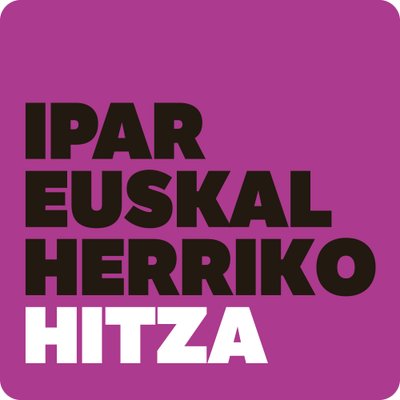





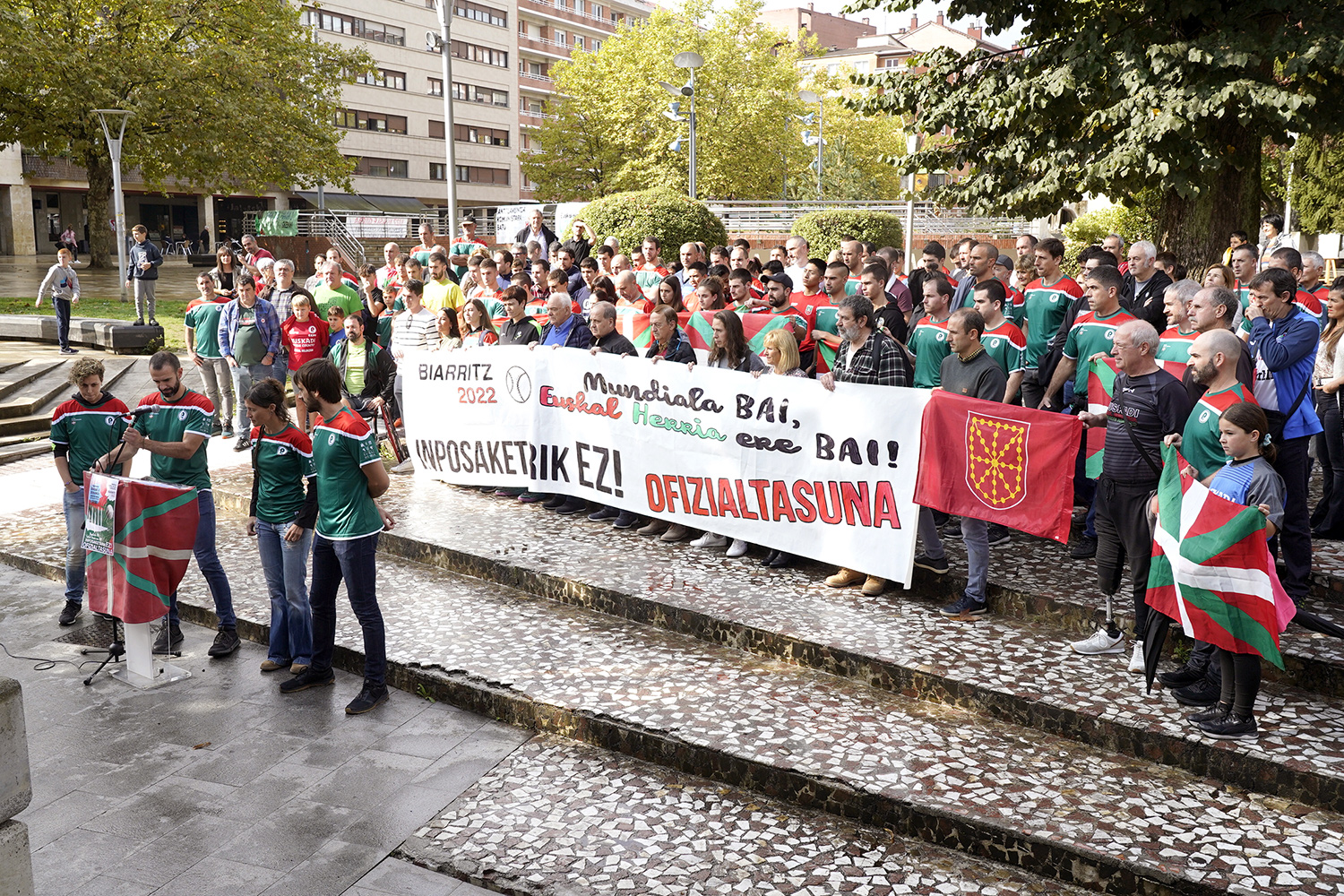
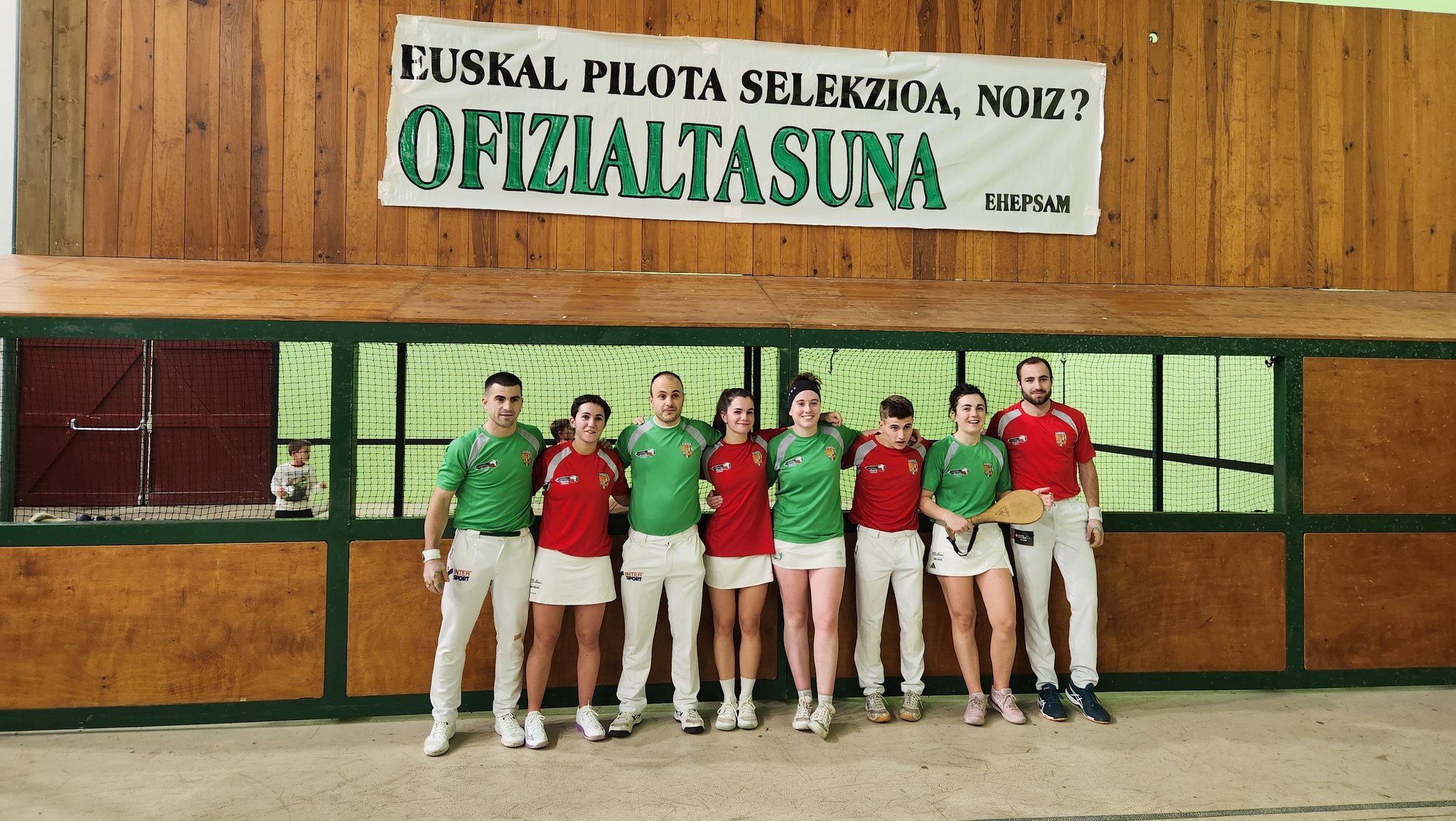
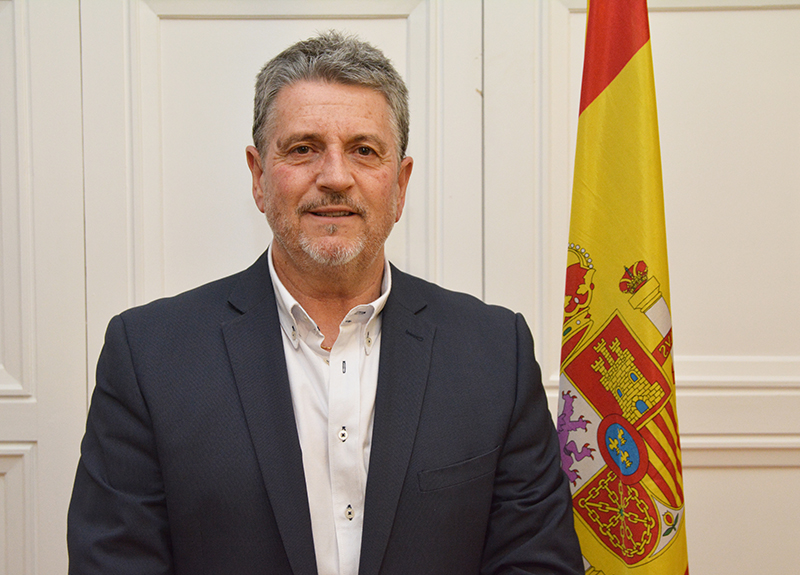
.jpg)
